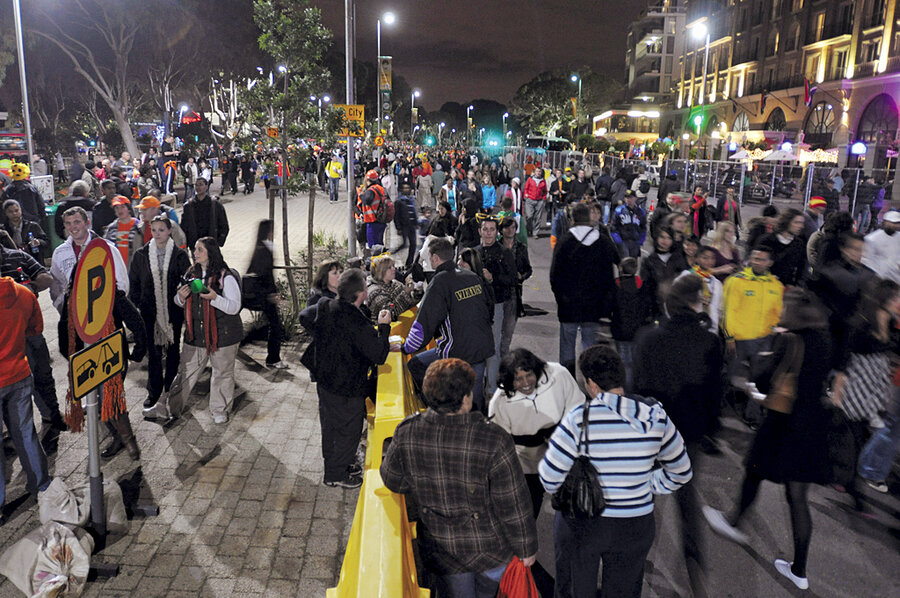World Cup legacy: more bids to get South Africans out of their cars
Loading...
| Cape Town, South Africa
During this summer's World Cup, Somerset Road in Cape Town was transformed into a South African oddity: a road without cars.
They called it the Fan Walk, 1.6 miles of asphalt connecting a public soccer viewing area downtown with the newly constructed Green Point Stadium. The path was mobbed with people during the city's eight World Cup matches; a sea of fans, performers, and kids running wild. The street party was a big change for a city and country that has shied away from venturing beyond the comfort and security of the private automobile.
"The motorcar is central to everything we do," says Dave Dewar, chair of City and Regional Planning at the University of Cape Town's School of Architecture and Planning. "There is no great urban tradition of walking."
But the Fan Walk experience could change all that. Cape Town is now planning more pedestrian malls for major sporting events, and the Fan Walk was recently re-opened as part of a celebration for Nelson Mandela's 92nd birthday.
"You've got 30 years of car-based culture and planning," says Andrew Boraine, chief executive of the Cape Town Partnership, which is trying to improve the central business district. "It's hard to transform a car-based culture into a society where people are confident about public space."
Tourist-friendly Cape Town is not short on reasons to go out walking. But many still feel it's too dangerous.
"I think people are scared of public places, mainly because of safety issues," says J.P. Smith, a Cape Town city councilor who's leading the charge to bring the Fan Walk back during other big events at the stadium. "The Fan Walk provided a very safe environment in which people could go out and mingle and socialize with other people and share a public environment without fear."
The city was anticipating about 20,000 people a day during the Fan Walk's eight days of operation, but match days routinely saw more than 50,000 people on the street. When Cape Town hosted the World Cup quarterfinal between Germany and Argentina, city officials counted more than 153,000 people on the Fan Walk
"We're right outside the stadium, so we filled up with both locals and foreigners," says David Raad, owner of Bravado, a bar located on the Fan Walk. He says business skyrocketed during match days.
Other businesses were similarly jammed, according to Mr. Raad. "On the Fan Walk itself, places were really pumped. But one road back, two roads back, you might as well have not been in town."
For some, it's about more than just business. "Many South Africans, despite being more than 15 years into democracy, still do not have nearly as much contact with people from other backgrounds on a casual basis," says Smith. He says creating these sorts of public interactions is crucial to helping the country overcome its not-so-distant past of racism.
"I think we are still artificially divided by all sorts of self-made barriers," says Smith. "And people, when they do get an opportunity to climb over some of those barriers, end up enjoying the experience."





